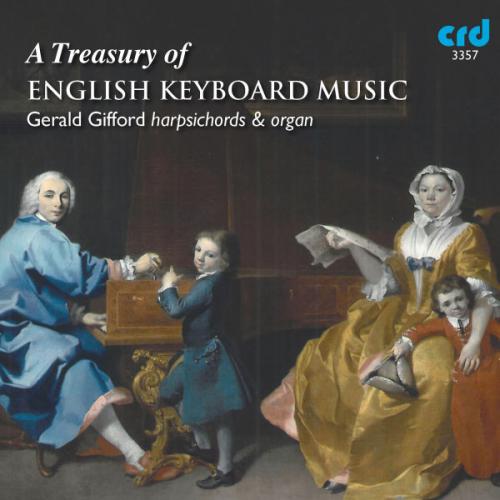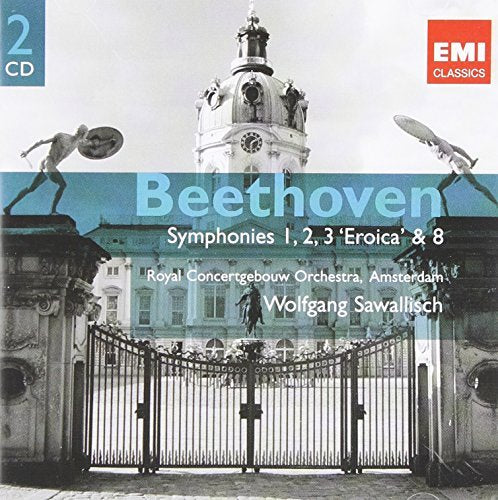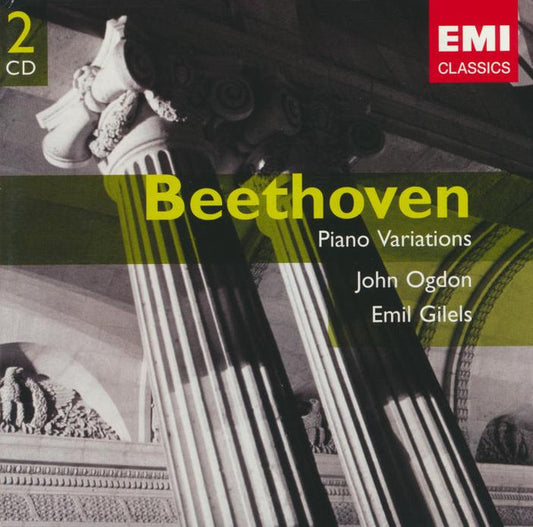GIMELL
Tallis: Spem in Alium; Salvator Mundi - The Tallis Scholars
Tallis: Spem in Alium; Salvator Mundi - The Tallis Scholars
FORMAT (CD, LP, DVD?)
FORMAT (CD, LP, DVD?)
Couldn't load pickup availability

This is the original release of The Tallis Scholars' acclaimed recording of Tallis's monumental 40-part motet Spem in alium; it remains one of their best-selling albums and was featured in the BBC Radio 4 programme Soul Music.
Thomas Tallis died on 23 November 1585. He was buried in the chancel of the parish church of St Alphege, Greenwich, which was subsequently (1711–1714) rebuilt and Tallis’s epitaph lost. By the time of his death he owned a house in Greenwich, and his will discussed quite substantial legacies. Having been the acknowledged master of the composers of the Chapel Royal at least from Queen Mary’s reign onwards, we may imagine that he was able to live comfortably.
Spem in alium, a forty-voice motet for eight five-part choirs, is certainly the most fluent of all the multi-choral works of the Renaissance and Baroque periods. Comparison could be made with Striggio’s forty-part Ecce beatam lucem; Josquin’s twenty-four-part Qui habitat in adiutorio; the thirty-six-part Deo gratias believed to be by Ockeghem; Giovanni Gabrieli’s relatively modest nineteen-part Buccinate in neomenia and Robert Carver’s nineteen-part O bone Iesu; or the fifty-four-part Missa Salisburgensis thought to be by Biber. Some of these are largely chordal (Striggio, Gabrieli, Biber); the rest heavily polyphonic (Josquin, Ockeghem, Carver). Tallis carefully and expertly blended the two possibilities, beginning with polyphony, using homophony for the important words ‘Domine Deus, creator caeli et terrae’, and finishing again with forty-part counterpoint. There is no sense that this is some kind of academic exercise, and little feeling that the number of voice-parts is excessive to what Tallis was trying to express. If, in trying to avoid consecutive octaves, some of the voices in the forty-part sections seem to be hopping aimlessly about an arpeggio, they are still contributing to the sheer weight of sound, which has an eloquence of its own. The other advantage of having so many choirs is that of polychoral or stereophonic effects between them.
No one is certain what prompted Tallis to write this piece or why he chose forty voice parts. The simplest explanation is that he was taking the number forty, often presented in the Bible as having a mystical significance. It has been suggested that Spem in alium was designed to celebrate the fortieth birthday of a reigning monarch (either Mary’s in 1556 or Elizabeth I’s in 1573). A firmer hypothesis attributes the idea of a forty-voice motet to Alessandro Striggio, who was in London in 1567, and probably had with him the score of Ecce beatam lucem – his own forty-part piece. Perhaps Tallis was impressed and challenged by this. Denis Stevens goes further with the suggestion, and believes that Spem was first performed in the Long Gallery of Arundel House in London in 1570 or 1571, commissioned by the Duke of Norfolk. The performers were a choir of men and probably boys directed by the composer, with the vocal lines reinforced by instruments at will. It was a secular occasion, but Tallis had himself chosen a respond text, referring to the meaning of hope and the absolution of sins, to make a point to Queen Elizabeth, who was then involved with the suppression of the Catholic church, of which Tallis was still a member.
Sancte Deus was an early work, a votive antiphon written in Henry VIII’s reign before the Reformation, and yet showing reformatory inclinations. Whereas votive antiphons were usually laudatory texts addressed to the Virgin Mary, Sancte Deus is a penitential text addressed to Jesus. The music, in four parts, is more succinct than Marian pieces used to be: a rare, Taverner-esque, blend of old and new.
The two settings of the text Salvator mundi, salva nos are quite compact, after the manner of compositional practice in Elizabeth I’s reign. The text itself is an antiphon proper to the Matins of the Exaltation of the Cross. The second setting incorporates a canon, clearly audible, between the mean and the tenor parts, the tenor following the mean by eight beats.
Gaude gloriosa is colossal in a different way from Spem in alium. It is of quite unusual length and general magnificence, which Tallis planned and shaped with all his customary craftsmanship. His chosen antiphon text imposed a certain pattern on him: it has nine invocations to the Virgin, each beginning ‘Gaude’, out of which Tallis makes eight musical sections. But the choice of scoring is entirely his own, building up slowly through the opening two solo passages for three voices each – the second of them acquires a fourth singer as it goes by – to the first long full section for six-part choir, which takes in two occurrences of the word ‘Gaude’. This is followed by a double gimell (both the treble and mean parts are split) joined by a bass, traditionally a highly charged arrangement of the parts. This is the centre of the piece, the keystone from which the others radiate. The trio for two countertenors and tenor is deliberately subdued; the following full section, the shortest, then affords a change in texture before a beautiful verse for mean, countertenor and two basses. This in itself has a pleasing balance: quite syllabic text-setting leading up to the final soaring melisma on the word ‘liberati’, which is also a piece of word-painting. The final full-section accumulates momentum slowly, culminating once in the rising phrase (‘adesse caelorum regnum’) and again in the ‘Amen’ with all the parts and especially the trebles peaking on unusually high notes. As for its date of composition, Paul Doe has decided that the piece ‘is addressed to Queen Mary, extolling her as a restorer of the true faith’. By her reign (1553–1558) it would have sounded deliberately and acceptably old-fashioned.
The seven-part Miserere nostri is a technical tour de force, rare in Tallis. It belongs – at one remove, since it has no chant – to the English tradition of canonic Miserere settings, pure demonstrations of technical skill. This piece is a canon six in two with a free tenor, which is to say that there are two canonic melodies, one sung by the two mean parts and the other shared between the four other canonic voices. The two means sing a normal, close canon at four beats distance, which is easily audible. The first countertenor has a melody which is also sung by three other voices starting simultaneously – one in double augmentation (the second countertenor); one inverted and augmented (the second bass); and another inverted and in triple augmentation (the first bass). It is a most effective tribute to the power of Tallis’s imagination.
Loquebantur variis linguis is a respond on the plainchant for Vespers at Pentecost, and scored for seven voices (MMAATBB) with the chant in the tenor. These voices are contained within a compass of twenty notes, which gives a complex sound, perhaps intended to represent the excited apostles trying out their newly acquired fluency in speech all at once.

1
Spem in alium [9'53]
2
Sancte Deus [5'16]
3
Salvator mundi I [2'20]
4
Salvator mundi II [2'31]
5
Gaude gloriosa [16'42]
6
Miserere nostri [2'31]
7
Loquebantur variis linguis [3'47]


BIG SPRING CLEARANCE SALE
-
A Treasury of English Keyboard Music - Gerald Gifford
Regular price €4,95 EURRegular priceUnit price / per -
AMERICAN CLARINET (Reich: New York Counterpoint; Carter: Clarinet Concerto; Adams: Gnarly Buttons; Sandroff: Tephillah)
Regular price €8,95 EURRegular priceUnit price / per -
Amor de Lohn: The Distant Love Of The Troubadors - Martin Best Ensemble
Regular price €4,95 EURRegular priceUnit price / per -
AVE REX ANGELORUM: CAROLS AND MUSIC TRACING THE JOURNEY FROM CHRIST THE KING TO EPIPHANY: CHOIR OF KEBLE COLLEGE, OXFORD
Regular price €4,95 EURRegular priceUnit price / per -
Bach Family: Chamber Music For Two Flutes
Regular price €4,95 EURRegular priceUnit price / per -
BACH: 6 Brandenburg Concertos (1953 Aldeburgh Festival Opening Concert) - Britten, English Chamber Orchestra (2 CDs)
Regular price €9,95 EURRegular priceUnit price / per -
BACH: 6 Partitas, BWV 825 - 830 - GUSTAV LEONHARDT (2 CDs)
Regular price €9,95 EURRegular priceUnit price / per -
BACH: Brandenburg Concertos 1-4 - ACADEMY OF ST MARTIN in THE FIELDS, SIR NEVILLE MARRINER
Regular price €8,95 EURRegular priceUnit price / per -
Bach: Complete Works For Organ, Vol. 10 - Kevin Bowyer (2 CDs)
Regular price €4,95 EURRegular priceUnit price / per -
Bach: Keyboard Concertos BWV 1053-1058 - Nick van Bloss, English Chamber Orchestra
Regular price €4,95 EURRegular priceUnit price / per -
Bach: Mass In B Minor, BWV 232 - SCHWARZKOPF / KARAJAN / VIENNA PHILHARMONIC (2 CDs)
Regular price €9,95 EURRegular priceUnit price / per -
Bach: The Partitas BWV 825-830 - Virginia Black, piano (2 CDs)
Regular price €4,95 EURRegular priceUnit price / per -
Bach: Works For Harpsichord - Richard Lester (2 CDs)
Regular price €4,95 EURRegular priceUnit price / per -
Balanchine's Jewels - MARIINSKY BALLET AND ORCHESTRA (Blu-Ray)
Regular price €9,95 EURRegular priceUnit price / per -
Beethoven: Complete Sonatas For Violin & Piano and Cello & Piano - PAUL TORTELIER, JACQUELINE DU PRE, CHRISTIAN FERRAS, ERIC HEIDSIECK (5 CDS)
Regular price €14,95 EURRegular priceUnit price / per -
Beethoven: String Quartets Op. 18/3, Op. 18/5 & Op. 135 - ARTEMIS QUARTET
Regular price €7,95 EURRegular priceUnit price / per -
Beethoven: Symphonies 1, 2, 3 & 8 - WOLFGANG SAWALLISCH, Royal Concertgebouw Orchestra (2 CDs)
Regular price €9,95 EURRegular priceUnit price / per -
Beethoven: Symphonies 4 & 6 - SIMON RATTLE, VIENNA PHILARMONIC
Regular price €8,95 EURRegular priceUnit price / per -
Beethoven: Two Romances; Mendelssohn: Violin Concerto; Schubert: Konzertstuck: RONALD THOMAS, BOURNEMOUTH SINFONIETTA
Regular price €4,95 EURRegular priceUnit price / per -
Beethoven: Variations For Piano - JOHN OGDON, EMIL GILELS
Regular price €8,95 EURRegular priceUnit price / per






















